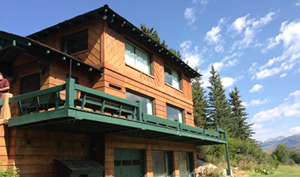Whether it is a new National Register nomination, the preservation of a historic building, an important archaeological discovery, or a consultation to prevent the destruction of the places you care about, here are a series of “SHPO Spotlight” stories:
This year Idaho SHPO staff are preparing a nomination to the National Register of Historic Places for the Ernest Hemingway house in Ketchum. Hemingway gained international acclaim for his short stories and novels, developing a highly influential prose style that exerted a lasting influence on 20th century English literature.
Hemingway’s association with Ketchum and Idaho dates to 1936, when he was invited by W. Averell Harriman to join other celebrities in the enjoyment and promotion of Harriman’s new Sun Valley Lodge, the first destination winter resort in the United States. Friends Hemingway made in Idaho, both local residents and visiting celebrities, strengthened the association, and he returned to Wood Valley many times in the ensuing decades. He and his fourth wife, Mary, bought the house in 1959. Tragically, Hemingway’s bouts of depression and paranoia worsened, and it was there that he took his own life in 1961. Mary lived in the house until her death in 1986.
Physically, the house is a poured concrete building designed to mimic the famous Sun Valley Lodge located a few miles away. The exterior walls were formed and stained to simulate rough-cut lumber. The interior of the house remains virtually unaltered, and includes many of the writer’s and his wife’s mementos and furnishings. This weblink will provide you with more details on the building maintenance.
Only a few other Hemingway houses are listed on the National Register: his birthplace and childhood homes in Illinois, his family’s summer lodge in Michigan, and his house in Key West. Collectively, they span the writer’s formative years, the peak of his career, and its tragic conclusion.
Today the house is owned and managed by the Nature Conservancy, who acquired the property after Mary’s death.
